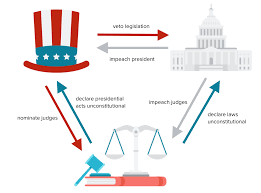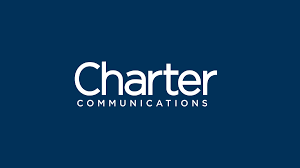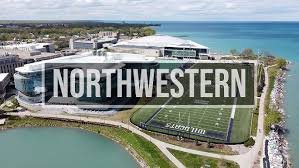The United States government functions as a constitutional republic. The U.S. Constitution defines the structure, limits authority, and protects individual rights. The government divides power into three separate branches to prevent abuse and promote accountability.
The Constitution
The Constitution, written in 1787, serves as the highest legal authority. It defines federal responsibilities and limits. Lawmakers, judges, and executives follow it when making decisions. The Bill of Rights, the first ten amendments, guarantees freedoms like speech, religion, and due process. Citizens rely on these protections daily.
The Three Branches of Government
The federal government operates through three branches: legislative, executive, and judicial. Each branch performs distinct duties. Each branch can influence the others through checks and balances.
Legislative Branch
Congress creates laws. Congress includes two chambers: the House of Representatives and the Senate. The House has 435 members. Each member represents a district based on population. The Senate includes 100 members, with two from each state.
Congress passes laws, approves spending, confirms appointments, and declares war. The House initiates impeachment. The Senate holds impeachment trials. Congress regulates trade and reviews executive actions. Lawmakers conduct hearings, write bills, and oversee agencies. They shape national policy through debate and negotiation.
Executive Branch
The President leads the executive branch. The President enforces laws, leads the military, and manages foreign policy. The Vice President supports presidential duties. Cabinet members run executive departments like Defense, Education, and Treasury.
The President signs or vetoes bills, appoints judges and ambassadors, and directs federal agencies. Agencies enforce environmental rules, collect taxes, protect consumers, and manage health systems. The executive branch responds to emergencies, enforces immigration law, and builds infrastructure.
Judicial Branch
The judicial branch interprets laws. Judges resolve disputes and review constitutional questions. The Supreme Court leads the federal judiciary. The court includes nine justices. Each justice holds office for life unless they resign or face removal.
Federal courts hear criminal and civil cases, review federal actions, and protect rights. The Supreme Court reviews appeals and settles conflicts between states or branches. Justices rule on landmark cases that shape society. Judges evaluate legal arguments and issue binding rulings.
Checks and Balances
Each branch monitors the others. Congress overrides presidential vetoes. The President vetoes bills. The Supreme Court rejects unconstitutional laws. The Senate confirms appointments. Congress removes corrupt officials through impeachment.
Lawmakers control the budget. The President proposes laws and enforces decisions. Judges ensure fairness by applying constitutional standards. No branch controls the government alone. All branches work together but limit each other’s power.
Federalism
Federalism divides authority between national and state governments. The federal government handles defense, immigration, and national trade. State governments manage schools, policing, healthcare, and transportation.
Each state has its own laws, courts, and constitution. State governments pass laws on marriage, business, and criminal justice. Local governments handle zoning, waste management, and city services. Governors manage emergencies and enforce laws within their states.
Federal and state governments share duties like collecting taxes, funding roads, and maintaining public safety. This balance provides flexibility and reflects regional needs.
Role of Citizens
Citizens shape government through voting. People elect representatives, vote on ballot measures, and engage with officials. Individuals influence laws, budgets, and policies. Citizens express opinions, organize events, and support causes.
Civic responsibilities include paying taxes, obeying laws, and serving on juries. Citizens participate in local meetings, submit petitions, and contribute to community projects. Informed individuals hold leaders accountable and strengthen democracy.
Education helps citizens understand rights and responsibilities. Schools teach civics. Media reports on government actions. Nonprofits support public involvement.
Government Services and Responsibilities
The government provides defense, safety, economic stability, and public services. The military protects the country. Law enforcement prevents crime and responds to emergencies. The government builds highways, funds schools, and regulates medicine and food.
Agencies oversee air travel, workplace safety, and environmental quality. Officials issue licenses, monitor banking, and support agriculture. Health programs serve elderly, low-income, and disabled people. Social Security offers retirement support. Medicaid and Medicare provide healthcare.
The government negotiates trade deals, supports diplomacy, and delivers foreign aid. Officials manage treaties and represent the country globally. Ambassadors meet with foreign leaders and promote national interests.
Modern Government
Government agencies use technology to provide faster services. People file taxes, renew licenses, and access benefits online. Officials publish budgets, reports, and data. Citizens track decisions and view laws through digital platforms.
Government officials address cyber threats, economic shifts, and climate issues. Teams develop policies, collaborate with experts, and adapt to challenges. Leaders coordinate disaster responses, improve infrastructure, and promote innovation.
Transparency laws allow citizens to request records and attend public meetings. Online portals provide updates and allow public feedback. Open data improves trust and accountability.
Conclusion
The U.S. government operates through three balanced branches. Each performs specific duties. The Constitution sets clear rules. Citizens vote, engage, and guide the system. Lawmakers, executives, and judges each play a role in preserving rights and enforcing justice.
Federalism allows both national and state leaders to address public needs. Officials deliver services, protect communities, and manage resources. Government actions affect daily life, from roads to healthcare to education.
Understanding how government works helps citizens participate effectively. Awareness promotes responsibility. Informed citizens help preserve democracy and strengthen the nation’s future.





